
Ever wondered how to keep your dog active and healthy while also making the most of your time together? DIY dog exercise equipment could be the solution you’ve been searching for.
In this blog post, we’ll delve into some creative ways you can build exercise equipment for your canine companion. Let’s get started!
It’s a well-known fact that dogs need regular exercise to maintain optimal health and happiness. Exercise can help control their weight, enhance their mood, and reduce behavioral problems such as excessive barking, chewing, or digging.
However, with commercial exercise equipment often being expensive and not always meeting our dogs’ specific needs or preferences, the DIY route provides a flexible and cost-effective solution.
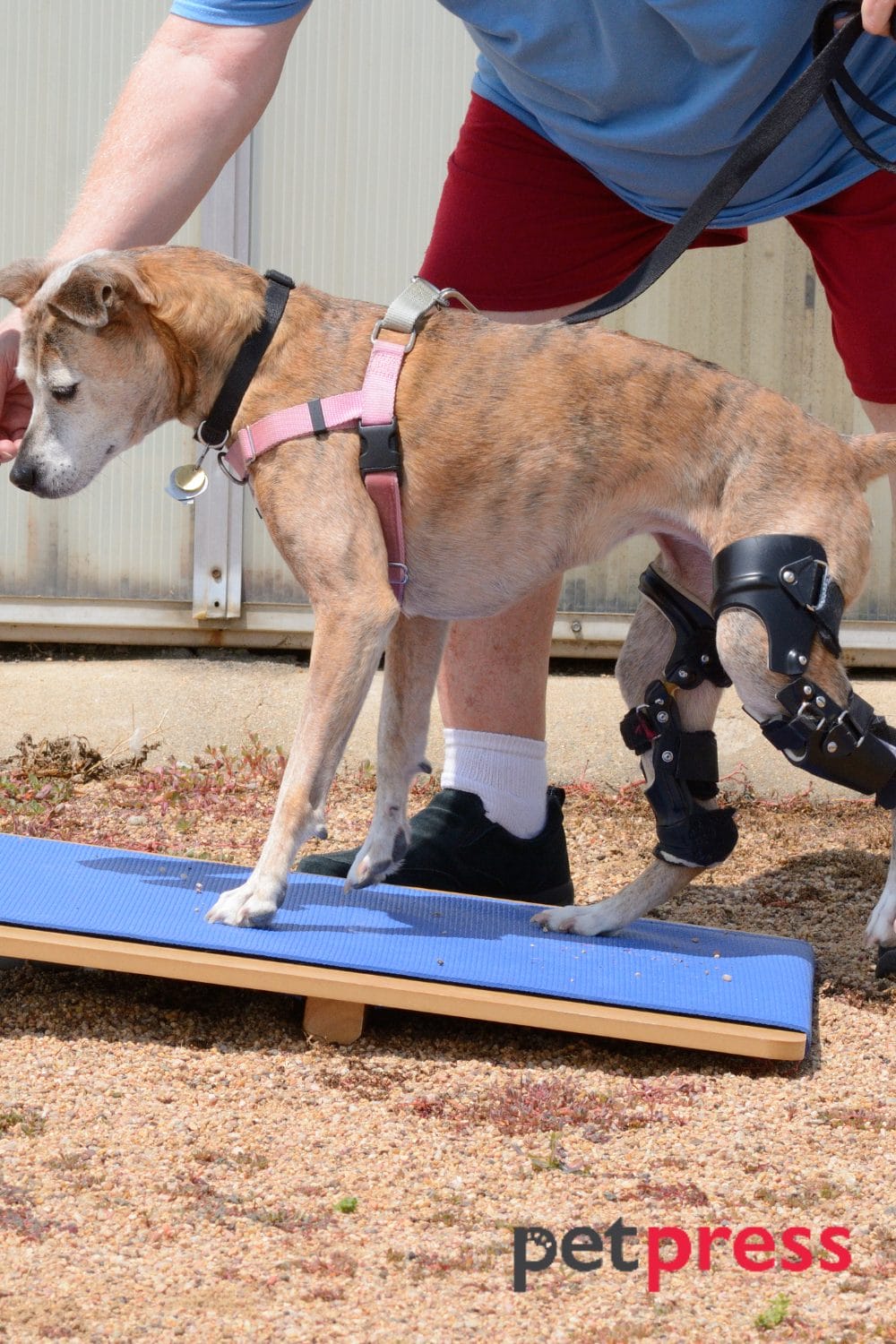
Why DIY Dog Exercise Equipment?
Dogs need regular exercise to maintain their health and happiness. Commercial equipment can be expensive, but DIY options offer a cost-effective, fun, and customizable solution.
Benefits of Regular Exercise for Dogs
Just like humans, dogs greatly benefit from regular exercise. It is vital for their physical health, helping to maintain a healthy weight and promoting cardiovascular fitness. Regular physical activity can reduce the risk of health problems such as heart disease and arthritis.
Mentally, exercise is equally essential for dogs. It provides them with mental stimulation, reduces boredom, and can improve their overall mood.
A lack of exercise often leads to destructive behaviors resulting from pent-up energy and boredom. Regular workouts help keep your dog’s mind sharp and active, resulting in a happier, more contented pet.
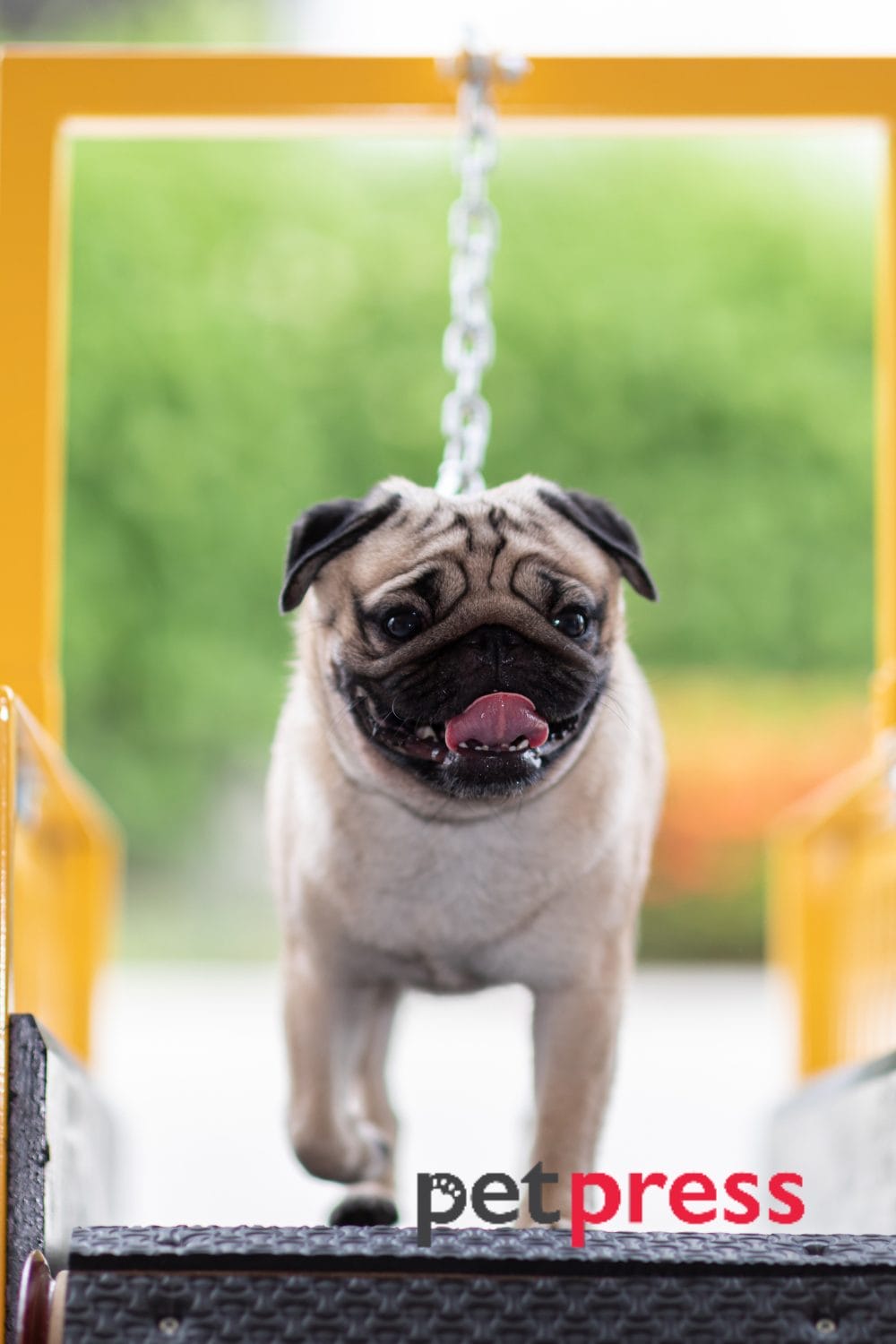
Why go DIY?
The concept of DIY dog exercise equipment comes with several advantages:
- Cost-effective: Commercial dog exercise equipment can burn a hole in your pocket. DIY equipment, on the other hand, involves minimal costs. You can often repurpose materials you already have at home, resulting in a cheaper solution to keep your pet entertained and exercised.
- Customizable: DIY gives you the flexibility to design and create equipment based on your dog’s needs and preferences. Whether your dog loves to jump, play fetch, or just run around, you can create something tailored specifically to keep them interested and engaged in their workouts.
- Bonding time: Building DIY dog exercise equipment gives you a unique opportunity to strengthen the bond with your furry friend. They can be involved in the process, and the time spent together enriches your relationship

DIY Dog Exercise Equipment Ideas
DIY Dog Treadmill
Treadmills offer a fantastic way for your dog to burn off that extra energy, particularly on days when outdoor play isn’t an option due to bad weather. They can also be a great tool for weight management and are especially beneficial for energetic breeds that need more exercise than a daily walk can provide.
Here’s a simple guide on how you can build a dog-friendly treadmill at home.
Materials Needed:
- An old manual treadmill
- Plywood
- Pool noodles or padding
- Non-slip surface (like a yoga mat)
- Screws and a screwdriver
- Saw
Step-by-step Guide:
- Modify the Treadmill: Start with an old manual treadmill that you no longer use. Manual treadmills run on your dog’s power and are safer because they can control the pace.
- Add Safety Rails: Measure, cut, and attach plywood to create safety rails on both sides of the treadmill. This prevents your dog from falling off. Make sure the rails are high enough to secure your dog but not too high to obstruct their movement or view.
- Add Padding: To prevent any accidents or injuries, cover the rails with pool noodles or soft padding. Simply slit the pool noodles lengthwise and slide them onto the plywood rails.
- Create a Non-Slip Surface: Dogs may find the treadmill’s surface slippery and difficult to grip. To solve this, add a non-slip surface like a cut-to-size yoga mat onto the treadmill. Use screws to secure it in place.
- Introduce Slowly: Start slowly and use positive reinforcement to get your dog used to the treadmill. Gradually increase the duration and pace as your dog’s confidence and fitness improve.
Remember, never tie your dog to the treadmill or leave them unattended. Always keep a close eye on them to ensure they’re safe and comfortable.
Building your dog treadmill is not only a cost-effective solution but also a fun DIY project that you and your pet will undoubtedly enjoy.
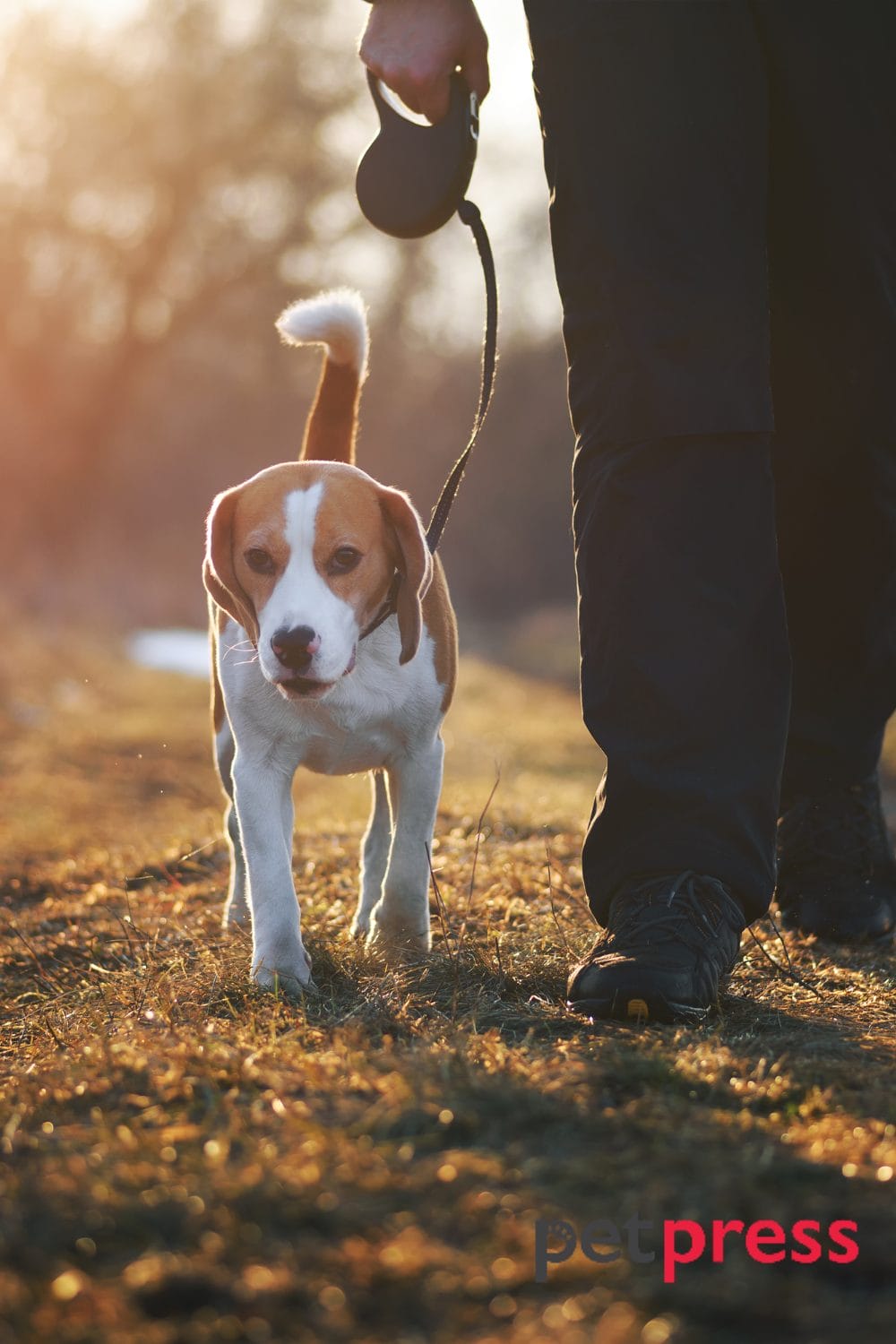
DIY Dog Agility Course
Agility courses provide multipurpose exercise combining physical agility, speed, and mental stimulation. They’re engaging, fun, and a great way to strengthen the bond between you and your dog. Below is a guide to creating some basic agility course elements using common household or hardware store items.
1. Jump Bars
Materials Needed:
PVC pipes
PVC T-joints and elbows
Measuring tape
PVC pipe cutter
Instructions:
Start by cutting your PVC pipes to the desired height and width of your agility jump. Remember to cut additional pieces for the jump’s feet.
Using PVC T-joints and elbows, assemble the base and stand for your jump. Insert a longer pipe into the T-joint to act as the jump bar.
Ensure the jump bar is easily dislodged for safety.
2. Weave Poles
Materials Needed:
PVC pipes
Measuring tape
PVC pipe cutter
Instructions:
Cut the PVC pipes to your desired height for the weave poles.
Decide on the spacing between the poles (21 to 24 inches is standard), and mark the spots on the ground.
Insert the cut PVC pipes into the ground at your marked points.
3. Tunnels
Materials Needed:
Large diameter PVC pipe or children’s play tunnel
Soft fabric if using PVC pipe
Instructions:
If using a PVC pipe, ensure it’s large enough for your dog to travel through comfortably. Cut a length suitable for your course.
To make the inside less intimidating and more comfortable, line it with a soft fabric.
Remember, introducing your dog to an agility course should be a gradual process. Start with simple tasks and use lots of positive reinforcement. As their confidence grows, so too will their agility and enjoyment.
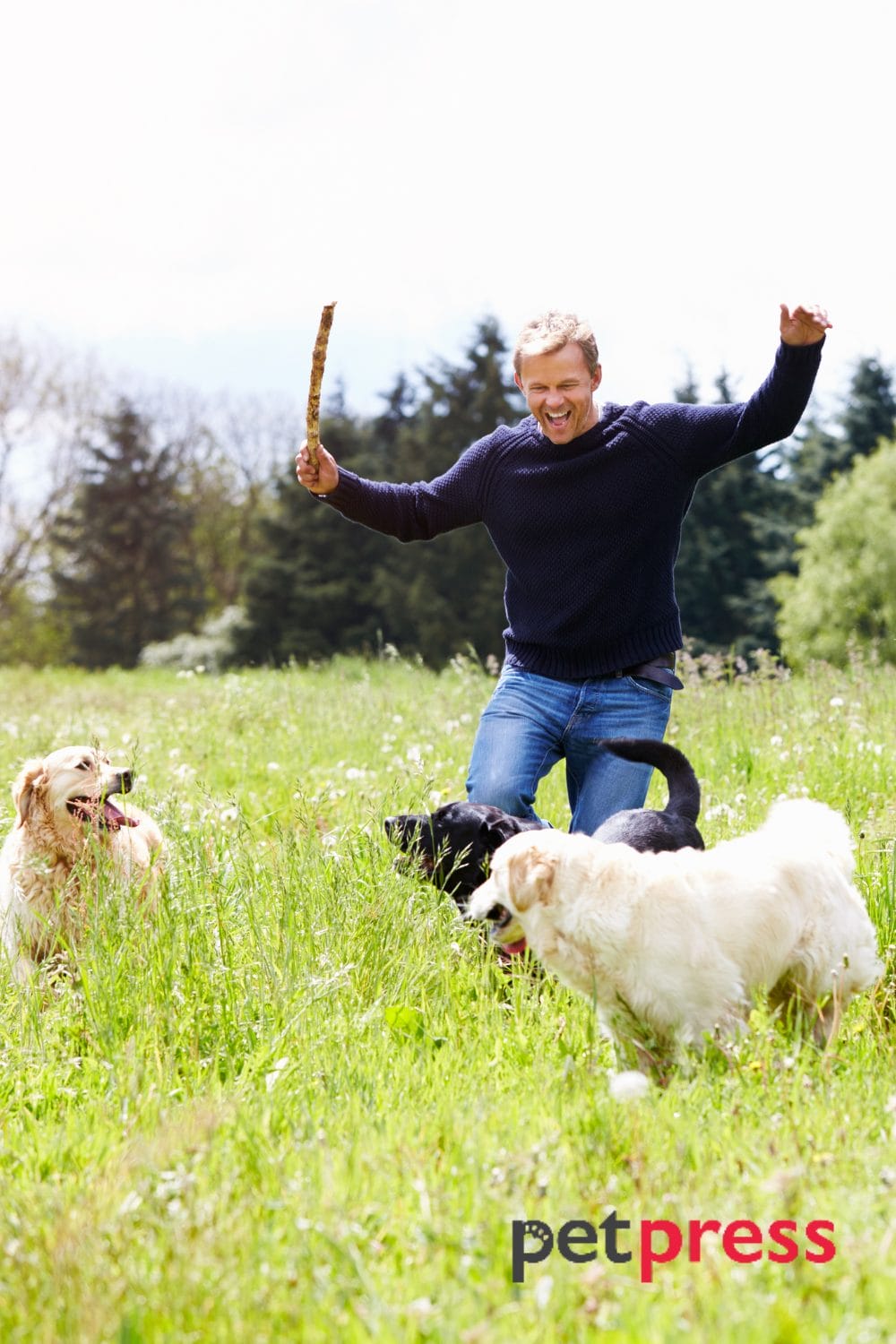
DIY Dog Fetching Machine
Fetch is a fantastic game that dogs of all sizes and breeds can enjoy. Unfortunately, our arms often tire out before our dogs do! A DIY fetching machine can give your dog hours of fun, allowing them to play to their heart’s content. Here’s how you can create your own.
Materials Needed:
- A launching device (like a kid’s foot-operated rocket launcher)
- Strong glue (such as epoxy resin)
- A tennis ball
Creating the DIY Fetching Machine:
- Preparation: Start with a child’s foot-operated rocket launcher as your basic launching device. You can find these in toy stores or online.
- Adaptation: Remove the foam rocket from the launcher and replace it with a tennis ball. Use strong glue like epoxy resin to secure the ball to the launcher’s arm.
- Ready to Play: Once the glue has dried, your fetching machine is ready. Step on the pedal to launch the ball, and let the fun begin!
Remember, safety is paramount. Ensure that the ball is securely fastened and that the launcher is stable before play. Supervision is key – never leave your dog unattended with the fetching machine. Building your DIY fetching machine could be a fun and rewarding project that brings joy to your dog’s playtime.
Wrapping It Up: Harness the Power of DIY Dog Exercise Equipment
We’ve explored the world of DIY dog exercise equipment, and it’s clear that the advantages are compelling. Not only does it provide a cost-effective solution to keep your canine companion healthy and entertained, but it also caters to their individual needs and preferences.
Building your dog’s exercise equipment could be an enriching project that strengthens the bond between you and your furry friend. From creating a customized treadmill to developing an exciting agility course or even a fetching machine, the possibilities are as endless as they are rewarding.
And let’s not forget the benefits for your dog. Regular exercise is crucial for their physical health, helping to maintain an ideal weight and promoting cardiovascular fitness.
Mentally, the challenges presented by these exercises keep their minds sharp, reducing the likelihood of behavioral problems stemming from boredom or pent-up energy.
So why not give DIY dog exercise equipment a try? Your pet will thank you with wagging tails, slobbery kisses, and hours of fun-filled activity.
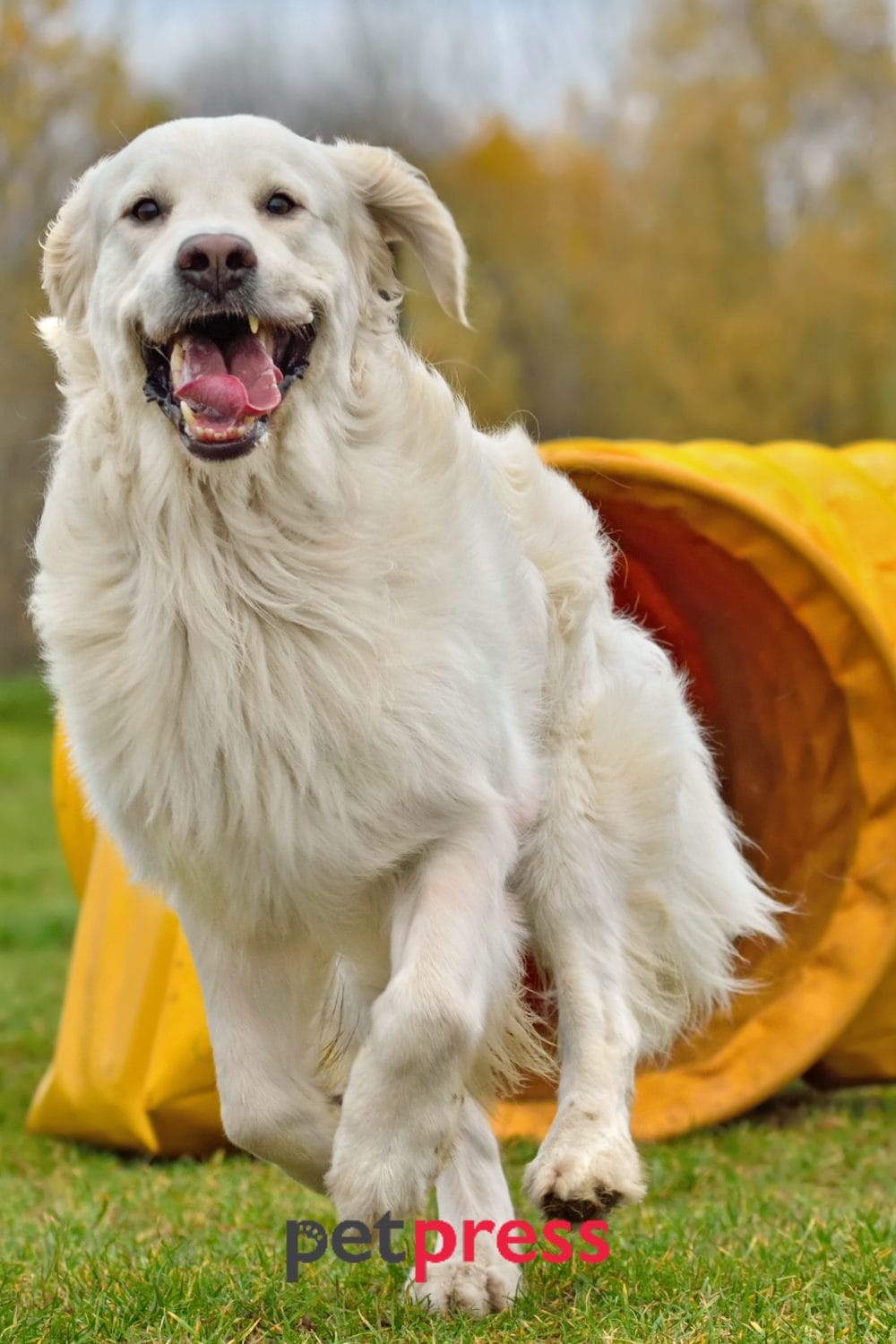
Share Your Experience
Have you embarked on your DIY journey, or are you planning to? We’d love to hear about it! Share your creations, moments, and even the process on our social media platforms. Remember, your experiences could serve as inspiration for other pet lovers out there.
Sharing is Caring
Did you find this post helpful? Do you know others who would appreciate these DIY initiatives as well? Share this blog post with your friends, family, and fellow pet lovers. Let’s build a community that celebrates the joy of pets and the value of DIY projects.
Stay Connected
If you want more pet-related content, DIY ideas, and inspiration, follow us on social media. Let’s continue this journey together, fostering the well-being of our furry friends.
Giving DIY dog exercise equipment a try could be the beginning of countless happy, active hours for you and your pet. What’s stopping you? Start your DIY dog exercise journey today, and let’s fill the world with healthier, happier pets. If you believe in this cause, do not hesitate to spread the word.
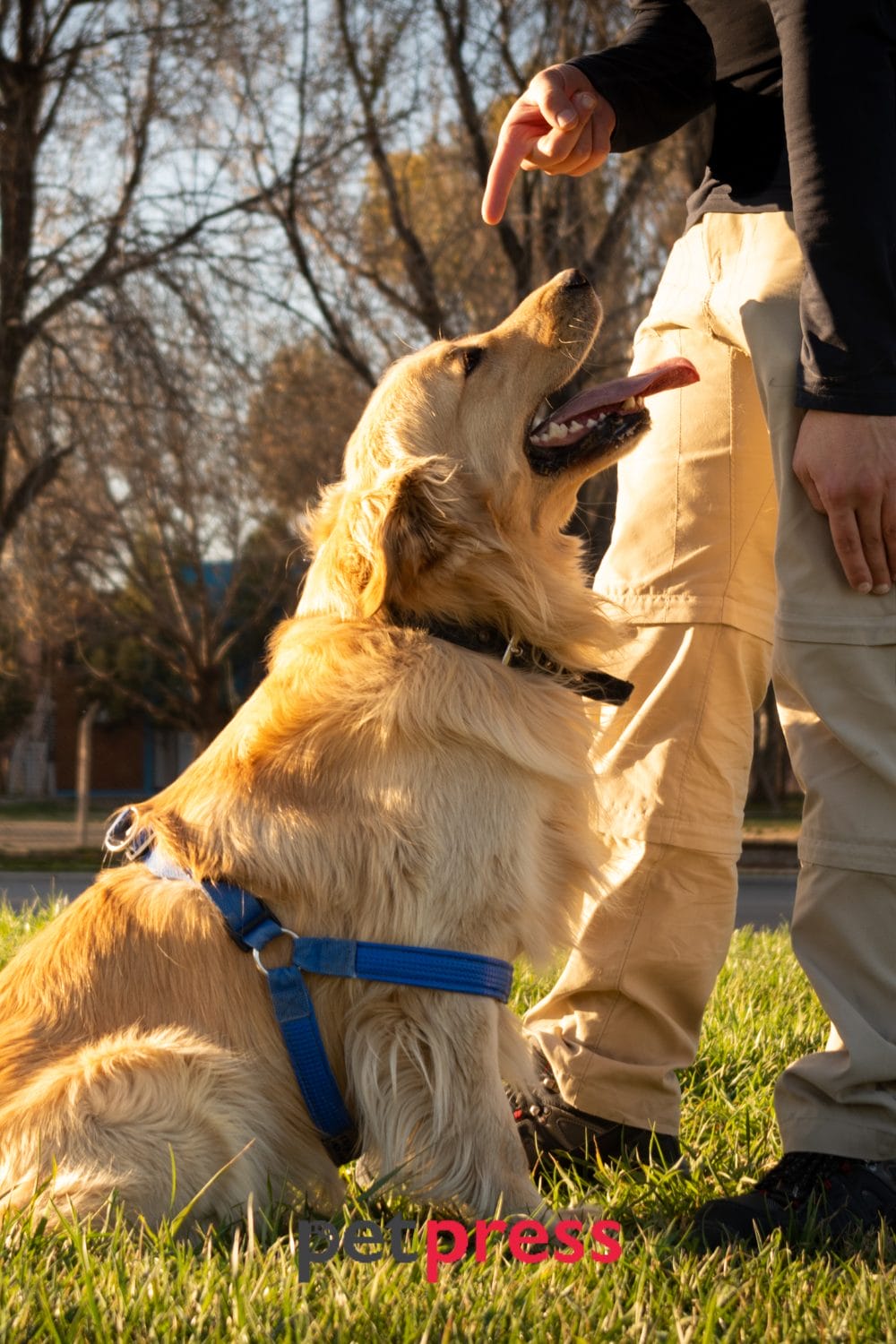
FAQs about DIY Dog Exercise Equipment
Always use non-toxic, pet-safe materials. PVC pipes, plywood, and non-slip surfaces such as yoga mats are commonly used. Ensure everything is sturdy and well-secured to prevent any accidents.
While it’s possible, it’s not recommended. Human treadmills are not designed for the shorter strides of a dog and may lead to injury. A dog-specific treadmill or a DIY option is a safer choice.
Patience and positive reinforcement are key. Start slow and reward your dog for their efforts with treats or praise. Make the experience fun and stress-free.
Not all dogs may be attracted to the same type of exercise. Figure out what your dog enjoys. If they’re not into a treadmill, they might love an agility course or fetch machine!
While DIY equipment can provide a great physical workout, it shouldn’t entirely replace walks, which offer both mental stimulation and opportunities for your dog to socialize. It’s all about creating a balanced routine.
Ready for more? Discover More Tips, Tricks, and DIY Projects for Your Furry Friends
Fun And Safe: Perfect Outdoor Play Yard For Dogs
How to Make Your Backyard Dog Friendly in 10 Easy Steps
Why Use a Dog Run? The Benefits Of Having It In Your Yard


GIPHY App Key not set. Please check settings